What? |
|---|
|
At the end of the 19th century, the Lake Biwa Canal (also known as Biwako Sosui 琵琶湖疎水) was constructed to provide Kyoto (京都) with water from nearby Lake Biwa (琵琶湖) and to modernize the city in an attempt to stop the economic decline after the move of the capital to Tokyo (東京). The canal includes 4 tunnels, an inclined railway and a water aqueduct to provide the Nanzenji Temple (南禅寺) with water. The canal runs along the hillside and is surrounded by cherry trees among many. Since 2018 small boats run along the canal connecting Otsu (大津) with Kyoto. The Philosopher’s Path (or Tetsugaki no Michi 哲学の道) is a famous walk along a cherry tree lined branch of the Lake Biwa Canal that connects the Nanzenji Temple and the unesco world heritage Ginkakuji (銀閣寺), better known as the Silver Pavillion. |
Where? |
The Lake Biwa Canal connects Otsu in Shiga Prefecture (滋賀県) with Kyoto. The boat cruise starts in Otsu and can be reached by getting off at Miidera Station (三井寺駅). Otherwise get off at Kyoto’s Yamashina Station (山科駅) – any line is fine – and walk your way to Keage Station (蹴上駅). From here you can connect with the Philopher’s Path that leads you to the Silver Pavillion. The pavilion is served by most major bus routes which lead you to whatever part of Kyoto you want to go next.

|
URL |
|
Japan Guide Outline (Philosopher's Path) The Lake Biwa Canal Cruise |
As the name already suggests, the Lake Biwa Canal connects Kyoto with the Biwa Lake in next door Shiga Prefecture. It is actually possible to board a small boat and go down the canal to either Yamashina or the end of the line, the Keage Incline. So my initial plan was to take this boat, get off at Yamashina and walk the rest of the way. The weather however was so abominable that I skipped the boat ride and started the walk only when the rain had ceased to fall.
Exiting Yamashina Station, I first headed to the Bishamondo Temple (毘沙門堂), passing the canal and my actual starting point. It is a popular spot when the leaves change color (the “koyo-season”). Just try google and you can see the blood-red carpet of fallen leaves that lead to one of the temple’s gates. The koyo-season hasn’t actually begun just yet, and in that light I have to say that this is just another temple. The three gates are fairly impressive and there’s a small pond that might be more charming under blue skies, but not enough to make the detour.
So I exited the temple and backtracked to the canal. I would follow this waterway for about an hour all the way to the Keage Incline, with the exception of a short stretch on a main road right before arriving at the Incline.
Strolling along the canal I can imagine the beauty during either the cherry blossom season or the koyo season. If taking the boat, it must be very charming; gliding across the water between these trees in either full bloom or in bright red and yellow colors. With the occasional turtle or crane bird to complete the picture. Now however, a week or two before the leaves would change color, the canal was just a simple stream surrounded by green. And quiet. The silence, the rustling of the leaves and the gentle splashing of some belated raindrops were the highlight of this hour.
But let’s be honest, if you live close by and own a dog, this is the perfect spot for a stroll. Otherwise there are better options to take a walk out of season (like the Yamanobe-no-Michi or Asuka).
The Keage Incline, the end point, was quit interesting though. A lot of couples in kimono were there to make a pretty picture on the gently sloping rails. So it might be interesting to just get off the train at Keage Station, visit the Incline and then head for the Philosopher’s Path. This path starts behind Nanzenji Temple, and the reason why I combined the Biwa Lake Canal walk with the Path of Philosopher’s walk is that on the huge grounds of this temple another remnant of the canal can be found. A very impressive one at that. The Suirokaku Water Bridge is an aqueduct built just to supply the Nanzenji Temple with water from Japan’s biggest lake. Currently it still stands impressively on the temple grounds.
From here it’s a short walk to the start of the Philosopher’s Path. This walk along a much smaller canal is a pretty famous one, especially with foreign tourists. As there are no foreign tourists allowed due to Covid-19, the place was pleasantly peaceful though. It was a nice change after the fairly crowded Keage Incline and Suirokaku Aqueduct.
I walked this path before. The very first time when I came to Japan in 2005, me and my friends took this route after visiting the Ginkakuji Temple. I was pretty impressed by both back then, and now I would do the same in reverse.
But again, truth to be told, the reason for the Philosopher’s Path popularity is a bit lost on me. The weather had cleared, so that was not the problem. The thing is, having lived in Japan for more than 10 years, you know that there are similar spots in every town. And while these are pretty and make for nice strolls, thy can hardly be called touristic attractions. It made me a bit worried about the Ginkakuji Temple; would it also be less impressive than I remembered?
Luckily, that was not the case. The Ginkakuji garden is spacious and has everything you could hope for in a Buddhist temple: a picturesque pavilion, a sand garden, a rock wall, a small (artificial) waterfall, a strategically positioned pond, a lot of trees and bright green moss.
I felt a sense of nostalgia which might have influenced my experience, but again I was impressed by this garden which is stuffed with every possible stylistic characteristic, but still has the ability to remain sober anyway.
In short, this combination of two walks – the Biwako Canal walk and the Philosopher’s Path – is very recommendable during either the cherry blossom season or the autumn color season. In other seasons there are more interesting options for walks, or for things to do in Kyoto. That being said, with the Keage Incline, the Suirokaku Aqueduct and the Ginkakuji, there are certainly some really interesting stops along the way.
>>More pictures<< |
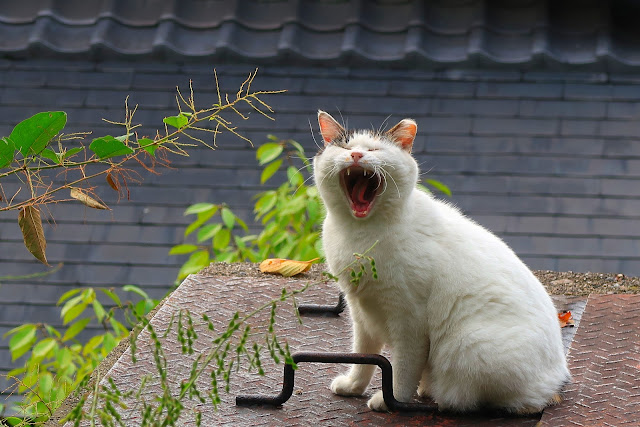
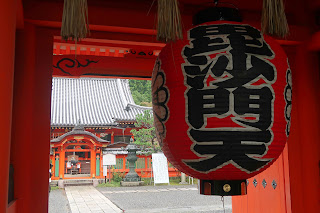
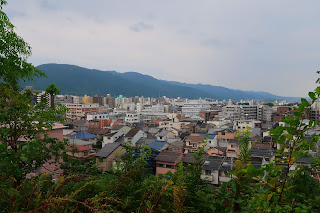
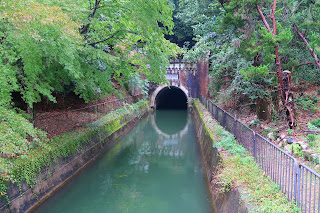
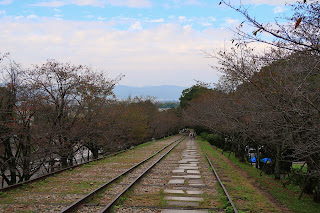


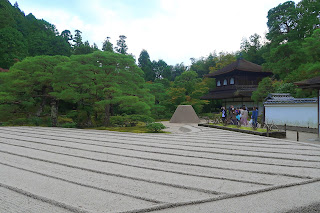












No comments:
Post a Comment